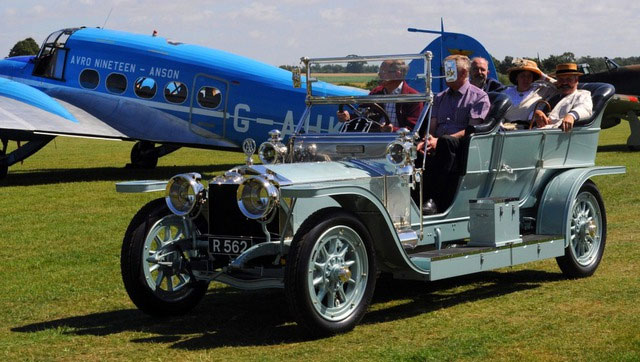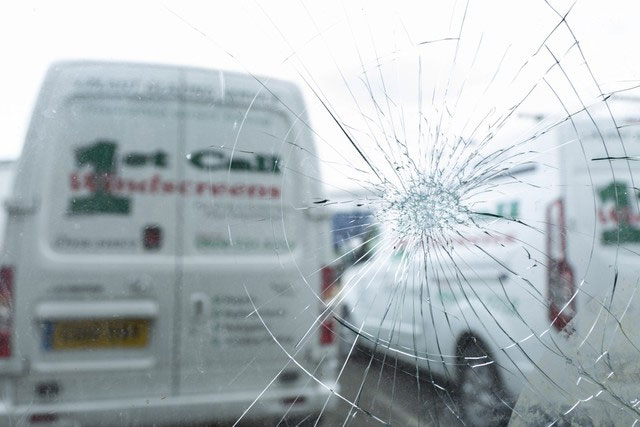Why do some cars not have windshields?
Cars without windshields will have an advantage in controlling airflow using aerodynamic principles. However, these cars are not suitable for everyday use.
The importance of the windshield
The windshield has a very specific purpose - to keep wind and dust out of the vehicle occupants' eyes. Surprisingly, windshields were not a required part of cars when they first appeared and were sold. In the past, car windshields were mainly ordinary glass panels, sold as accessories rather than standard equipment.

Windshields were equipped as an optional accessory on old cars.
This is because at the beginning of the automobile industry, engines were still in their infancy so they moved at much lower speeds than they do today and therefore caused less wind. and dirt bothers users more. However, these original glass panels are very brittle, so upon impact they will break into large, sharp pieces, very dangerous for people in the car. This led to the development of tempered glass and laminated glass.
On impact, tempered glass breaks into small, blunt pieces, so they are used for glass on car doors. Meanwhile, laminated glass consists of a layer of plastic alternating between two layers of glass. When impacted, it breaks but still retains its structure thanks to the interlayer, keeping people in the car safe, so it is often used for glass. drive.
In addition to keeping passengers safe from the elements, they also serve two additional functions.
- First , they form part of the car's structure. This means they share some of the impact forces in the event of an accident, along with other parts of the chassis.
- Second , they reduce drag and improve fuel economy.

The windshield is the first barrier against external factors such as strong winds, dirt, insects, and gravel thrown in when the vehicle moves at high speed. Thanks to the windshield, the driver and passengers are protected from these harmful agents, ensuring safety for the eyes, skin and respiratory system.
Why do some cars not have windshields?
If the windshield plays so many roles, removing it from a car might sound like a technically foolish move, yet some of the most expensive and limited edition models lack it. windshield.
The idea originated from small Italian boats called barchettas . This moniker is also used in the auto industry, where it represents open-top sports cars. The distinguishing feature of barchetta-style vehicles is the lack of a full windshield; instead they have a small wind shield to keep the driver somewhat safe from the elements.

The windshield is made from a special material that can withstand high impact forces, helping to protect the driver and passengers in case of an accident. The windshield may break but will not break into sharp pieces, limiting the risk of injury to people in the car.
However, over time, these cars had their windshields completely removed. To ensure passenger comfort and drivability, body panels are designed to control airflow through and around the cabin.
Although this design has many different proprietary names by many different manufacturers, the basic concept remains the same.
How is air controlled in a car without a windshield?
In fact, when driving old-style barchettas, drivers should use goggles or a helmet with a visor to protect themselves from the oncoming winds. However, with modern barchettas this is not necessary, as they are designed to optimize air flow and control it with air ducts at the front of the vehicle .

In fact, no car is produced as standard without a windshield. The windshield plays an extremely important role in safety and driving experience, so its absence is a violation of traffic safety regulations in most countries.
When a car moves forward, it cuts the wind. Part of this air is directed into the air duct, while the rest flows through the hood (bonnet).
The air ducts are designed so that they channel the air at high speeds, angled to exit the car's bonnet. This angle is usually vertical or facing the direction of travel of the vehicle, away from the driver. This air exits the duct, forming a barrier that impedes the flow of high-speed air through the hood.

Some racing cars designed to optimize speed and aerodynamic performance may use an enclosed cockpit or helmet instead of a windshield. However, these vehicles are typically only used in controlled competition environments and have other safety measures in place to protect the driver.
The result of this interaction is a stream of air passing over the driver's head in a similar way to air passing through a windshield. When this air reaches the cabin, it is further directed through open channels to separate the turbulent component of the air from the laminar component.

Illustration of wind tunnel testing of a car without a windshield.
Barchettas are also equipped with wind deflectors that interrupt airflow in high pressure areas to create low pressure. This improves airflow in the desired direction. Furthermore, they are also equipped with spoilers, which help create downforce to keep the car firmly planted on the ground at high speeds.
However, due to the lack of conventional safety features, cars without windshields are often banned from public roads in many countries.
- Video: How have cars changed in the last 100 years?
- 11 interesting figures about cars
- Electric cars that once shone 100 years ago, die now and will explode in the future
- Preparing to sell cars flying
- Is the concept of driving a black box a 'sauna' in the summer?
- Why should not buy black cars?
- Cars know how to talk
- Simple way to protect your car on hot days
- Self-driving cars, the future of world cars is developing like?
- Self-driving cars turn into mini beds and offices
- America: Cars were nearly burned down by the driver to forget the water bottle in the car and the lesson for all of us.
- What to do when a car loses its brakes or loses control?
 'Fine laughs' - Scary and painful torture in ancient times
'Fine laughs' - Scary and painful torture in ancient times The sequence of numbers 142857 of the Egyptian pyramids is known as the strangest number in the world - Why?
The sequence of numbers 142857 of the Egyptian pyramids is known as the strangest number in the world - Why? History of the iron
History of the iron What is alum?
What is alum?